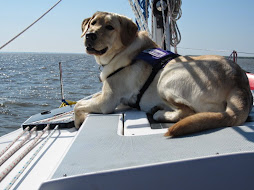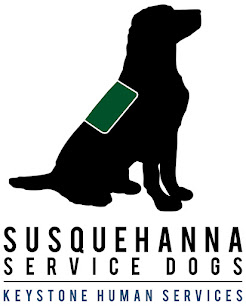Yesterday in Team Training, our partners ate lunch with
their dogs for the first time, and next week, they’ll be eating in a restaurant
for the first time.
People with service dogs have public access, which means
they can take their dog anywhere that’s open to the public. This includes
restaurants, which as you well know, normally do not allow dogs.
Here are some tips for taking your service dog or service
dog in training to a restaurant.
Think about your dog
when choosing a table
While you’re in the restaurant, your dog is going to be
tucked under the table in a long down-stay. Ideally, your dog will fall asleep.
When you’re choosing a table in a restaurant, keep your dog’s comfort in mind.
If a table has one leg in the center, your dog may not be able to lie
comfortably under the table, which means she’ll be less likely to remain in a
down-stay while you’re eating. If you’re being seated by a hostess, don’t
hesitate to request a booth if you see that your dog won’t fit comfortably
under the other tables.
Be mindful of other
patrons
When you’re walking into the restaurant and going to your
table, be mindful of the other patrons. Don’t let your dog sniff other people.
If the restaurant seems like a challenging place for your dog, you can hold a
few treats in front of your dog’s nose to keep them focused until you get to
your table.
The same goes when it’s time to leave. If your dog has been
lying down for a long time, the first thing they’re going to do when they stand
up is shake themselves. Try to have your dog stand where they won’t send fur
flying in all directions. For example, if you’re at a booth, ask your dog to
stand while they’re still tucked under the table.
Watch out for food on
the floor
Inevitably, food ends up on the floor in restaurants. And
chances are high that if there’s food on the floor, your dog will find it. Keep
an eye out for anything on the floor that might distract your dog.
But what if you want to go to a restaurant that offers things
like peanuts to patrons and encourages people to throw the shells on the floor?
This might be a good time to simply leave your dog at home.
Keep one eye on your
dog at the buffet
Buffets can be very tricky to navigate with a dog. You have
to hold the leash, serve yourself food, and carry your plate. It can be a
balancing act! You can always leave your dog at the table with a friend or
family member and ask them to hold your dog’s leash while you get your food. If
you take your dog through the buffet line, keep a close watch on your dog
because you don’t want them sniffing at the table or stealing a lick or a piece
of food. As you move through the line, you can put your dog in a “down” while
you serve yourself. This will keep your dog’s nose far away from the food. Then
you’ll just need to balance your plate and hold your dog’s leash as you walk
back to your table.
If your table is near the buffet and you know your dog has a
solid down-stay, it can be very tempting to leave your dog unattended at the
table while you get your food. However, while you might know your dog extremely
well, you don’t know the other people in the restaurant. While you’re at the
buffet, a child (or an adult) could pet your dog under the table, they could
try to feed your dog, or someone could whistle or talk to your dog, all of which
could easily distract him. It’s always best for you or someone you trust to
stay with your dog at all times in a restaurant.
Have you taken your service dog or service dog in training
to a restaurant? Share your tips in the comments.























